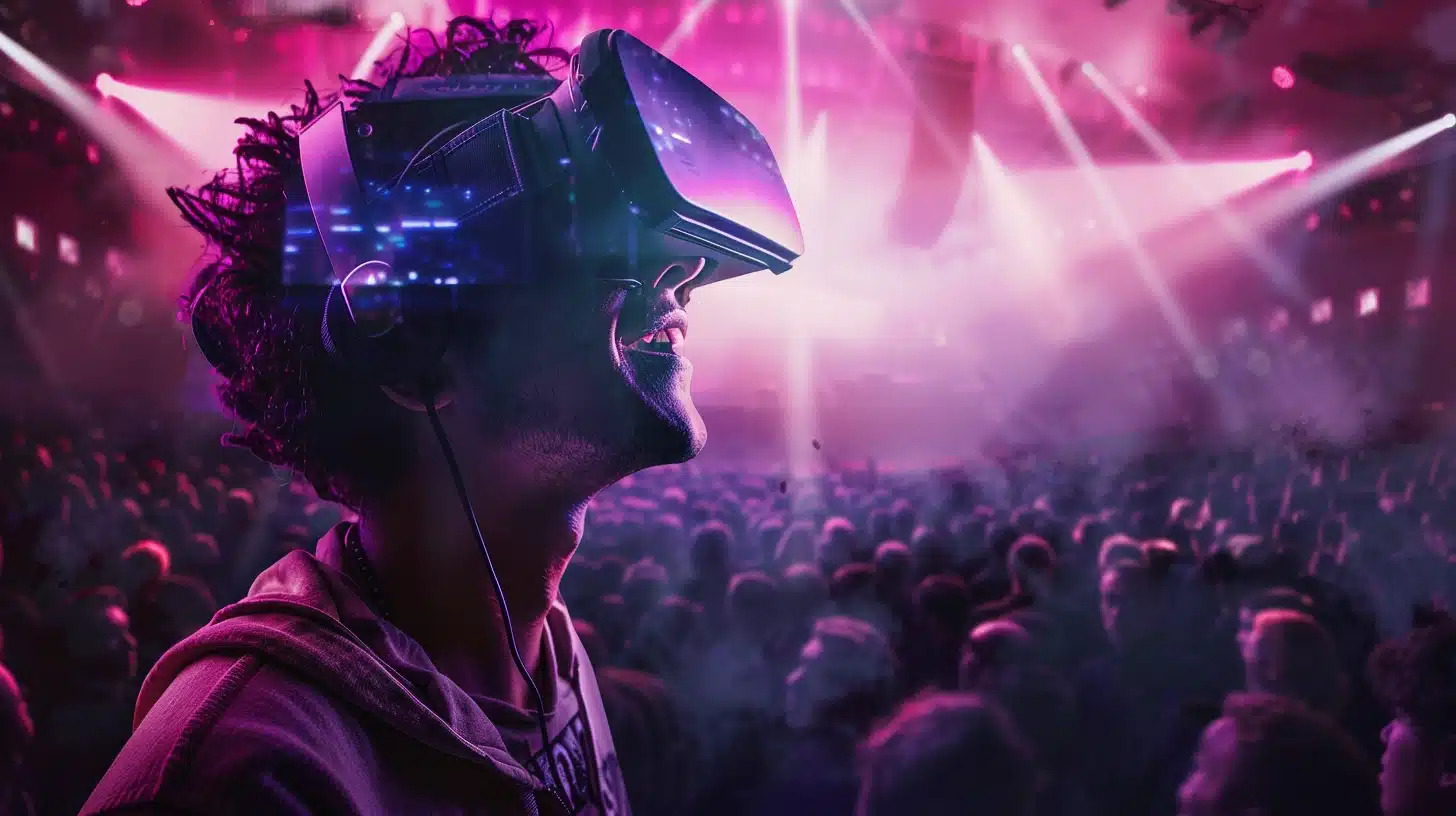
Virtual Concerts: Shaping the Future of Live Music
Virtual concerts are changing the way people experience live music. As digital platforms become more sophisticated, the traditional concert experience is evolving into something that offers new levels of convenience and global connectivity. For artists, venues, and fans alike, virtual performances have become an innovative way to share music beyond geographical limits.
This article examines the impact of virtual concerts on the music industry. It delves into the technology behind these events, explores changes in artist-fan relationships, and discusses emerging business models. Through practical examples and insightful analysis, you’ll learn how virtual concerts are redefining live music for today’s audiences.
By understanding this shift, industry professionals and music enthusiasts can better navigate the changing landscape. Whether you’re an artist looking to reach a broader audience or a fan wanting to experience live music in new ways, the rise of virtual concerts offers valuable insights into the future of the music industry.
The Transformation of Live Music Experiences
The traditional concert experience is undergoing a significant transformation thanks to virtual platforms. Instead of gathering in packed venues, fans can now attend live performances from the comfort of their homes. This shift has opened up a new realm of possibilities, allowing concerts to reach a global audience without physical boundaries.
Artists are embracing this change by creating immersive digital experiences that mimic the energy of live shows. Virtual concerts often feature high-quality video production, interactive elements, and real-time engagement with fans, making the experience both dynamic and memorable. This evolution not only democratizes access to live music but also enables artists to experiment with creative presentation styles.
Moreover, the flexibility of virtual events means that performances can be streamed across different devices at any time. This on-demand access allows fans to enjoy concerts at their own pace, replay their favorite moments, and share experiences with friends and family. The transformation is redefining what it means to experience live music in the modern era.
Technological Advancements Powering Virtual Concerts
Advances in streaming technology and digital production have been at the heart of virtual concerts. High-speed internet, powerful servers, and sophisticated broadcasting tools have made it possible to deliver high-quality live performances to millions of viewers simultaneously. These technical improvements ensure that virtual concerts can rival the quality of in-person events.
Modern platforms utilize cutting-edge video compression, adaptive bitrate streaming, and real-time data analytics to provide a smooth viewing experience. Artists can perform live, while production teams integrate visual effects and interactive graphics that enhance the overall experience. This combination of technology and creativity creates an engaging environment that captivates audiences.
Digital tools also allow for seamless integration of social media, letting fans interact with the performance as it happens. Features such as live chats, virtual applause, and social media feeds create a community feel, blurring the line between physical presence and virtual participation. These advancements continue to push the boundaries of how live music can be experienced online.
Expanding Global Reach and Audience Engagement
One of the most significant benefits of virtual concerts is their ability to reach a global audience. With traditional venues, geographical limitations often restrict viewership. Virtual platforms eliminate these boundaries, allowing artists to share their performances with fans around the world instantly.
This global access has led to increased audience engagement, as fans from different countries can tune in to live events without the need for expensive travel or time zone constraints. For instance, a band performing in Los Angeles can easily capture the attention of viewers in Asia, Europe, or Africa, creating a diverse and expansive fan base.
In addition, virtual concerts provide interactive features that boost engagement. Real-time commenting, interactive polls, and live Q&A sessions invite viewers to participate actively in the experience. This heightened engagement not only deepens the connection between artists and their audiences but also creates a vibrant, communal atmosphere that is often missing from traditional live events.
Redefining Artist and Performer Roles
The advent of virtual concerts has changed the way artists and performers approach live shows. No longer confined by the limitations of physical venues, musicians can experiment with innovative formats and creative visual presentations. Virtual platforms encourage artists to push creative boundaries and craft unique experiences that stand out in a crowded digital space.
Artists now have the freedom to design shows that blend live performance with digital art, animation, and interactive elements. This flexibility has led to groundbreaking performances that captivate audiences in new ways. Many performers are using virtual concerts as an opportunity to reinvent their stage presence and explore multimedia storytelling techniques.
The shift has also altered the relationship between artists and fans. Virtual concerts often allow for more direct interaction through live chats and social media integration, fostering a closer connection. Fans get the opportunity to engage with their favorite artists in a more personal way, which can lead to lasting relationships and a more loyal following.
New Revenue Streams and Business Models
Virtual concerts are not only changing how music is consumed but also how revenue is generated in the industry. Traditional revenue models that relied heavily on ticket sales and merchandise are being supplemented by new digital strategies. Subscription services, pay-per-view events, and virtual tip jars offer artists alternative ways to monetize their performances.
These digital revenue streams can be especially beneficial for independent artists who may not have the resources for large-scale tours or traditional marketing campaigns. Virtual events can reach a larger audience without the overhead costs of physical venues, allowing artists to earn income while keeping expenses low.
Additionally, the data collected from virtual performances helps in fine-tuning marketing strategies and understanding audience preferences. By analyzing viewing habits, engagement levels, and demographic information, artists and promoters can tailor future events to maximize revenue and reach. This data-driven approach is reshaping the economics of live music, offering sustainable models for long-term success.
Enhancing Fan Interaction and Community Building
One of the standout features of virtual concerts is the way they enhance fan interaction. Unlike traditional concerts, where the interaction is mostly one-way, virtual events create opportunities for real-time engagement. Fans can comment, share, and even vote on aspects of the performance, which fosters a sense of community and active participation.
These interactive elements not only make the concert more engaging but also provide artists with immediate feedback. Real-time analytics help performers understand which parts of the show resonate best with their audience, allowing them to adjust the performance dynamically. This two-way interaction deepens the connection between the artist and the fans, creating a more personal and immersive experience.
Social media integration further amplifies this effect. Fans can share their experiences and reactions during the event, creating a ripple effect that extends the reach of the performance beyond the virtual stage. This communal interaction helps build a loyal following and enhances the overall impact of the concert.
Addressing the Challenges of Virtual Concerts
While virtual concerts offer numerous benefits, they also come with challenges that need to be addressed. Technical issues such as streaming glitches, latency problems, or bandwidth limitations can disrupt the viewing experience and reduce audience satisfaction. Ensuring a stable and high-quality stream is essential for the success of any virtual performance.
Another challenge is the lack of physical presence, which can sometimes diminish the immersive experience that live events provide. Without the energy of a live crowd, some performances may feel less engaging. Overcoming this requires innovative production techniques, such as interactive visuals and real-time audience participation, to bridge the gap between physical and digital experiences.
Security and piracy are also concerns in the virtual realm. Unauthorized recordings or illegal streams can undermine the revenue model of virtual concerts. Addressing these challenges involves implementing robust security measures, using watermarking technologies, and monitoring for unauthorized content distribution. Overcoming these obstacles is key to ensuring that virtual concerts remain a viable and profitable option for artists and promoters.
Future Trends in Virtual Concerts
The future of virtual concerts looks promising, with continuous advancements in technology paving the way for more immersive and interactive experiences. Innovations in virtual reality (VR) and augmented reality (AR) are expected to play a significant role in enhancing the live concert experience. Imagine donning a VR headset to feel as though you’re actually in the front row, surrounded by fellow fans and the vibrant energy of a live show.
Further developments in streaming technology will improve the overall quality and accessibility of virtual performances. With faster internet speeds and more advanced compression techniques, the visual and audio experience will continue to get better, making virtual concerts more attractive to mainstream audiences. These technological improvements will help overcome current limitations and open up new possibilities for content creation and delivery.
Additionally, as the market matures, we can expect to see more hybrid models that combine live, in-person events with virtual components. These hybrid concerts could offer the best of both worlds, allowing fans to attend physically or online. This flexibility will cater to diverse audience needs and further solidify the role of virtual concerts in the global entertainment landscape.
Embracing a New Era of Entertainment
The advent of virtual concerts marks a significant milestone in the evolution of entertainment. As digital platforms continue to improve, the lines between physical and virtual experiences blur, offering audiences a more integrated and flexible way to enjoy live performances. This new model not only provides convenience and accessibility but also fosters a sense of global community.
For artists and promoters, virtual concerts offer a unique opportunity to reach wider audiences without the constraints of physical venues. The ability to stream live events to viewers around the world opens up new revenue streams and creative possibilities. As a result, the entertainment industry is witnessing a transformation that is both innovative and inclusive.
Looking ahead, the integration of emerging technologies such as virtual reality and augmented reality will further redefine how we experience live music and performances. This evolution is poised to create richer, more immersive experiences that cater to a digitally connected generation. The future of entertainment promises exciting developments that will continue to shape how we create, share, and enjoy live performances.
A Digital Renaissance in Entertainment
Virtual concerts are reshaping the way we experience live music, blending high-quality production with the convenience of digital access. The transformation of film and music industries has led to new production, distribution, and marketing models that benefit both creators and audiences. By adopting innovative technologies and adapting to changing consumer habits, the entertainment landscape is moving toward a more dynamic and accessible future.
Artists and promoters are now able to reach global audiences in ways that were once impossible. The evolution of digital platforms continues to break down geographical barriers, making live performances accessible to anyone with an internet connection. This shift not only expands the market but also enriches the cultural exchange between diverse audiences.
Ultimately, the digital revolution in entertainment offers a promising future where technology and creativity go hand in hand. With new tools and platforms emerging every day, the way we experience music and live events is constantly evolving. By embracing these changes, both creators and consumers can enjoy a more connected and engaging entertainment experience.







